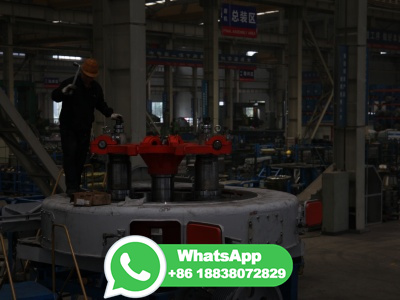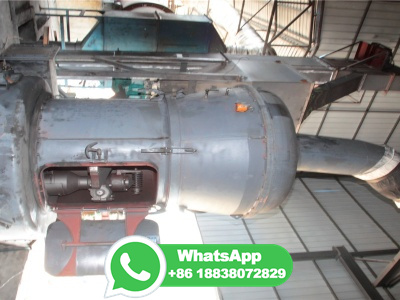
WEBThe primary product of the smelting process outlined above is a carbonsaturated ferroalloy containing 76 to 80 percent manganese, 12 to 15 percent iron, up to percent carbon, and up to percent silicon. ... is produced by the smelting of slag from highcarbon ferromanganese or of manganese ore with coke and a quartz flux. Smelting ...
WhatsApp: +86 18203695377
WEBFeb 20, 2020 · The reduction of iron ore with hydrogen in a DC plasma jet was studied by Gilles and Clump . They used a DC plasma jet with a watercooled plasma torch to generate an arc for the smelting process. Iron ore powder with two different grain size distributions, 63–74 and 44–53 µm, was used to carry out the experiments.
WhatsApp: +86 18203695377
WEBFeb 18, 2024 · Place the iron ore in the input slot of the furnace. Add a suitable fuel source to the fuel slot. Common fuel sources include coal, charcoal, and wood. The fuel will power the furnace and melt the iron ore. Wait for the iron ore to smelt. It will take some time for the ore to undergo the smelting process and transform into iron ingots.
WhatsApp: +86 18203695377
WEBThe smelting process involves ore processing and the removal of impurities. ... The chemicals used include mercury and iron. Mercury is toxic to our health when in gaseous form. Gold is recovered from the ore using the MerrillCrowe process, or the electrowinning method, both of which use mercury traces. To remove these traces, the ore is ...
WhatsApp: +86 18203695377
WEBSmelting works engineering. A smelting or steelworks plant serves to produce unrefined iron and steel out of iron ore. The term, smelting technology, describes the process of producing steel, as well as the appliions and machines used in doing so. These machines are equipped with both ball bearing and roller bearing slewing rings.
WhatsApp: +86 18203695377
WEBMar 3, 2020 · The Corex process differs from the conventional blast furnace route in that noncoking coal can be directly used for iron ore reduction and smelting process, eliminating the need for coke oven plants. The use of lump ore or pellets also eliminates the need for sintering units. The process combines prereduction of ore in a shaft furnace, .
WhatsApp: +86 18203695377
WEBBloomery smelting during the Middle Ages.. Ferrous metallurgy is the metallurgy of iron and its earliest surviving prehistoric iron artifacts, from the 4th millennium BC in Egypt, were made from meteoritic ironnickel. It is not known when or where the smelting of iron from ores began, but by the end of the 2nd millennium BC iron was being .
WhatsApp: +86 18203695377
WEBOct 9, 2023 · The Circored process uses pure H 2 to reduce iron ore with a particle size less than 1 mm, and the reduction rate of iron ore powder for 15 min at 650 °C can reach 70%. To improve the efficiency of the entire production process, 4 h H 2 reduction of iron ore powder from CFB is needed to achieve a metallization rate of 95%.
WhatsApp: +86 18203695377
WEBIn the HPSR process, the type of iron ore or ironcontaining residuals affects ore reduction by hydrogen. The process eliminates the prior agglomeration process, and iron ore fines can be directly introduced. The process is compared with fluidized bed reduction, which uses hydrogen as a reducing agent and fine ore as feed material.
WhatsApp: +86 18203695377
WEBSmelting is a process of applying heat to ore to extract a base metal. it's a sort of extractive metallurgy. .. Smelting uses heat and a chemical reducer to decompose the ore, driving off other elements as gases or slag and leaving the metal base behind. The reducer is usually a fuel source of carbon, like coke.
WhatsApp: +86 18203695377
WEB6 days ago · Smelting is a process in which the base metal is extracted from the ore by applying heat to it. It is one kind of extractive metallurgy. It is used for the extraction of many metals like copper, aluminium, iron, silver, lead and many other base metals from their respective ores. For the decomposition of the ores, smelting uses heat and chemical ...
WhatsApp: +86 18203695377
WEBJan 1, 2013 · The two step process uses a cyclone, where the fine ore is prereduced and melted, and an iron bath reactor where the ore is finally reduced. Contrary to the conventional HIsmelt process, the pyrolysis of the coal takes place outside the process in a reactor, which uses the heat generated by degassing the coal ( Luengen et al, 2011b ).
WhatsApp: +86 18203695377
WEBMar 21, 2016 · One process I had particular trouble envisioning was the smelting process. The simplest and most common furnaces used in the Middle Ages were called bloomeries, and they were typically built out of stone or clay. Iron ore was placed in through the top, along with a lot of charcoal for fuel, and kept burning for hours.
WhatsApp: +86 18203695377
WEBOct 20, 2015 · Steps For Firing/Smelting. Mix the ore, wheat flour lard and ½ of the soda ash. Put ½ of the silicon sand in the bottom of the crucible and add the ore mixture. Cover the ore mixture with the remaining soda ash, the borax and the silicon sand. Place in the furnace and put on high heat (2100 degree F). It takes about 2 hours or longer, so don ...
WhatsApp: +86 18203695377
WEBSep 5, 2023 · Place the iron ore in the top slot of the furnace. Add fuel such as coal or charcoal to the bottom slot. Wait for the smelting process to complete. Once the smelting is finished, voila! You'll have shiny new iron ingots ready for use in your adventures. Remember that each piece of ore yields one iron ingot when smelted.
WhatsApp: +86 18203695377
WEBDec 13, 2023 · The technological parameters of sinter ore smelting at the pilot Romelt furnace of the Novolipetsk Iron and Steel Works are given. The problems occurring during the processing of hematite ore by the smelting reduction Romelt process are shown. A modifiion of the technology is proposed, which involves the Romelt duplex process .
WhatsApp: +86 18203695377
WEBAug 13, 2020 · Head to to get 50% off your first order of hair loss to Keeps for sponsoring this video!Need some iron? I've recreated...
WhatsApp: +86 18203695377
WEBIron Bloomery – The most basic process used from the ironage to medieval times. ... the earliest known samples of iron were probably produced by accidentally introducing iron ore into a bronze smelting furnace. The iron age was a globalscale development, that took place over the span of 1500 years because various cultures were all at ...
WhatsApp: +86 18203695377
WEBFeb 16, 2022 · How Iron Was Made. Iron making evolved over a few thousand years. Using the ancient "bloomery" method, iron ore was converted directly into wrought iron by heating the ore while at the same time melting the ore's impurities and squeezing them out with hand hammers. This is also called the "direct process." By the 1100s water .
WhatsApp: +86 18203695377
WEBZinc smelting is the process of converting zinc ores into pure zinc. Zinc smelting has historically been more difficult than the smelting of other metals, iron, because in contrast, zinc has a low boiling point. There are two methods of smelting zinc: the pyrometallurgical process and the electrolysis process; both methods are still used ...
WhatsApp: +86 18203695377
WEBDuring the smelting process, the furnace is heated by burning charcoal, a fuel which generates an internal furnace atmosphere rich in carbon monoxide that produces two side effects. ... Smelting starts with ore, and as iron is one of the most common elements on earth, many different kinds of iron ore are available, such as hematite, limonite ...
WhatsApp: +86 18203695377
WEBFeb 10, 2022 · The hydrogenbased direct reduction of iron ore combined with EAF smelting is being widely discussed as a possible replacement for the commonly used BF/BOF route in steelmaking when targeting carbon footprint reduction. ... Outotec's Circored technology is the first process for iron ore reduction based on hydrogen .
WhatsApp: +86 18203695377